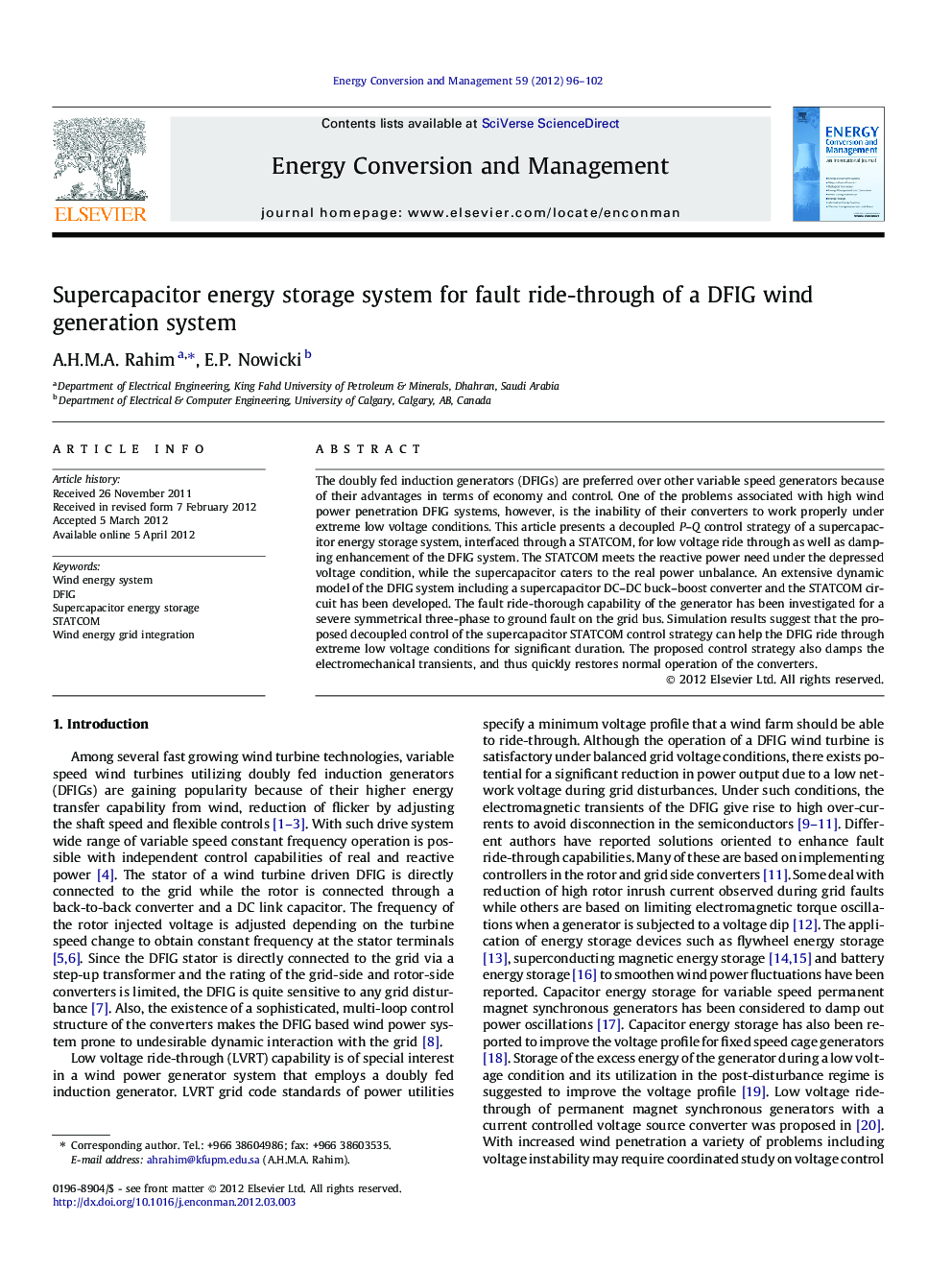| کد مقاله | کد نشریه | سال انتشار | مقاله انگلیسی | نسخه تمام متن |
|---|---|---|---|---|
| 772247 | 1462903 | 2012 | 7 صفحه PDF | دانلود رایگان |

The doubly fed induction generators (DFIGs) are preferred over other variable speed generators because of their advantages in terms of economy and control. One of the problems associated with high wind power penetration DFIG systems, however, is the inability of their converters to work properly under extreme low voltage conditions. This article presents a decoupled P–Q control strategy of a supercapacitor energy storage system, interfaced through a STATCOM, for low voltage ride through as well as damping enhancement of the DFIG system. The STATCOM meets the reactive power need under the depressed voltage condition, while the supercapacitor caters to the real power unbalance. An extensive dynamic model of the DFIG system including a supercapacitor DC–DC buck–boost converter and the STATCOM circuit has been developed. The fault ride-thorough capability of the generator has been investigated for a severe symmetrical three-phase to ground fault on the grid bus. Simulation results suggest that the proposed decoupled control of the supercapacitor STATCOM control strategy can help the DFIG ride through extreme low voltage conditions for significant duration. The proposed control strategy also damps the electromechanical transients, and thus quickly restores normal operation of the converters.
► A detailed dynamic model of a DFIG is developed to study the low voltage ride-through phenomenon.
► A supercapacitor-STATCOM energy storage system is employed.
► Decoupled real and reactive power control strategies implemented on the system.
► The proposed controller show extremely good transient behavior following low voltage conditions.
Journal: Energy Conversion and Management - Volume 59, July 2012, Pages 96–102